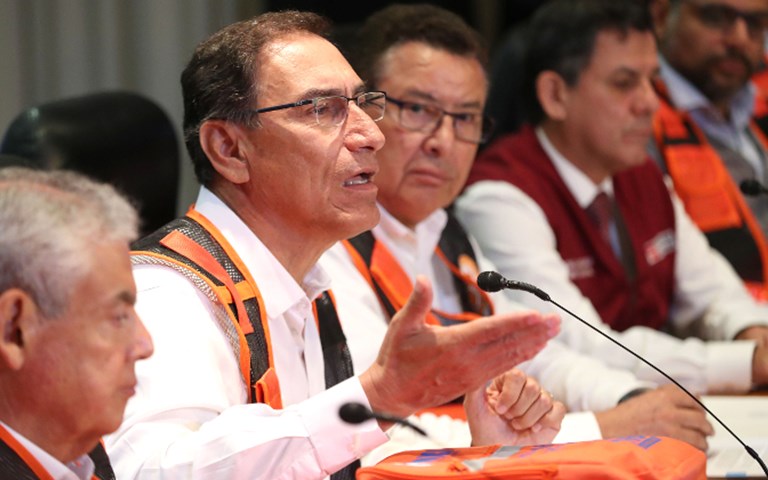Martín Vizcarra, President of Peru. Courtesy of Ministerio de Defensa del Perú
Attendees at the PDAC convention in early March should not be faulted for failing to recognize the man who would soon be the president of Peru. Most Peruvians did not know Martín Vizcarra’s name three months ago, either – the then-ambassador to Canada and a former governor of a small region was unknown to 81 per cent of the country, according to a March poll.
An engineer by trade, Vizcarra has been vocal in his support of the mining industry, but he has also called for it to play a larger social role.
“We will demonstrate to the investors of the world that social and environmentally responsible mining can be developed in Peru,” he tweeted in February as he prepared for PDAC.
At the time, Vizcarra was the vice-president, a mostly titular role in Peru, as well as an ambassador. On March 23, two weeks after PDAC, he replaced former president Pedro Pablo Kuczynski, who resigned following a corruption scandal. Vizcarra’s vow to clamp down on graft has helped reassure investors who were spooked by Kuczynski’s scandal; the Peruvian sol has recovered since he took office, after the currency lagged during the political upheaval.
Mining makes up 10 per cent of the country’s gross domestic product and 60 per cent of its exports, and Peru has billions of dollars worth of mining projects in the development stage awaiting regulatory approval. Newmont’s stalled Conga mine proposal and Southern Copper’s Tia Maria project have both faced years of red tape and court challenges. Protests at operational and development sites have been known to turn violent. Protesters often cite fears about water contamination and noise as key points of contention.
Local and environmental groups opposed to development have lobbied the new president to keep to his policy of sustainability in government.
Vizcarra cancelled contracts for oil exploration with U.K.-based Tullow Oil in May over concerns from coastal communities about the impact of the activity, according to Reuters. The contracts had been approved by Kuczynski just hours before his resignation. Vizcarra has denounced illegal mining projects and promised to crack down on unlicensed operators. In April, the president also passed a framework law for addressing climate change in the country, the first such law in South America designed to act on the commitments on greenhouse gas emissions and climate change mitigation, adaptation and finance laid out in the 2015 Paris climate accord.
But Vizcarra faces an opposition-controlled congress as well as critics outside the government who denounce his long-time support for Kuczynski. The finance minister quit in early June after protests broke out in response to his decision to raise taxes on fuel. Meanwhile, another of his ministers has already been forced to resign for an unrelated scandal.
Yet the once low-profile politician has also shown a more common touch by committing to visit poorer outlying regions every week, compared to Kuczynski, who rarely left the capital. He has said he intends to visit all 25 of Peru’s regions in his first six months in office.
When he visited Cajamarca, one of the poorest provinces in the country and home to several major mines, including Newmont’s Yanacocha mine and stalled Conga project, he tweeted “Cajamarca, a region with so much richness and enormous development potential in several sectors, cannot record poverty rates.” He also promised to listen to feedback from local leaders after meeting with them. “[We] have made the decision to promote projects that are socially and environmentally responsible. I am going to pay special attention to this region and its demands,” he said in another tweet.
Vizcarra’s term will last until 2021. He has already said he will not run again.
Discover more of our 2018 Names to Know




